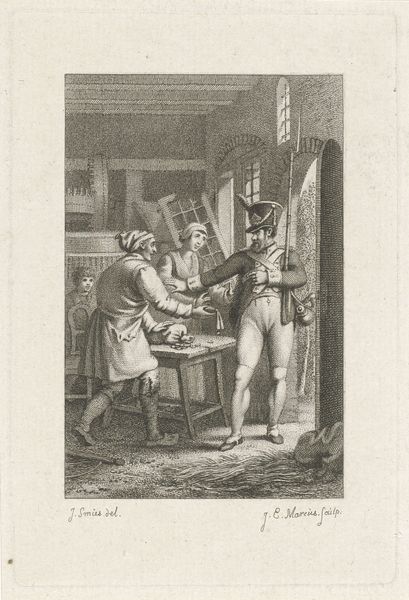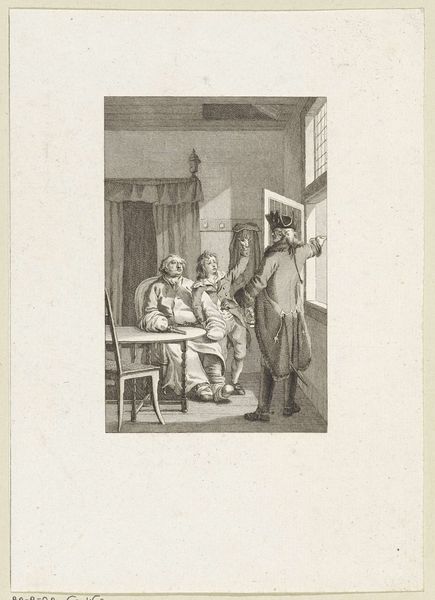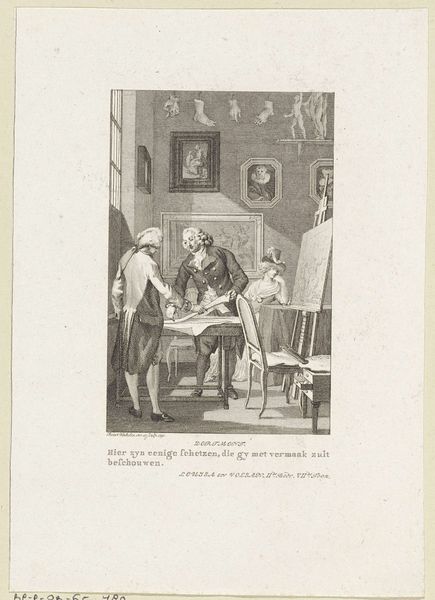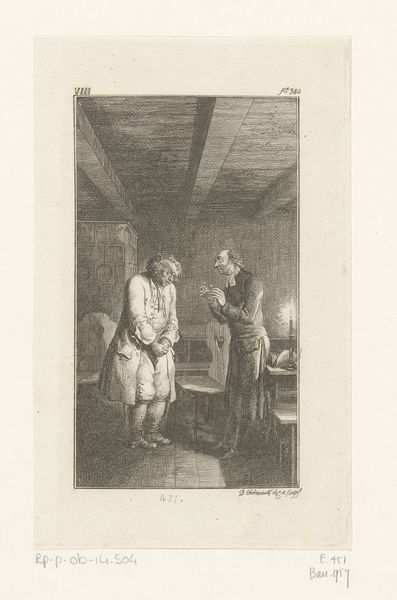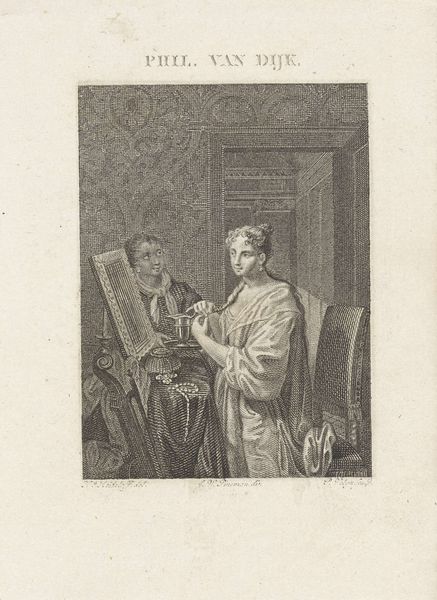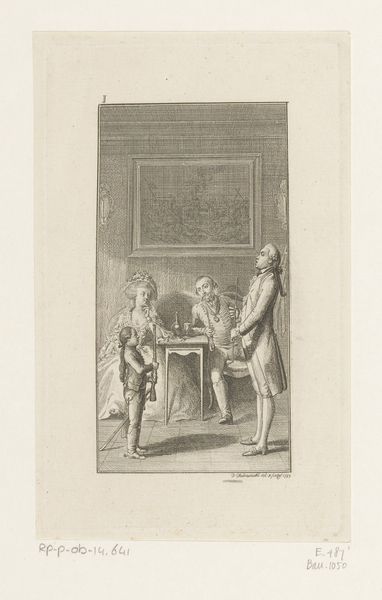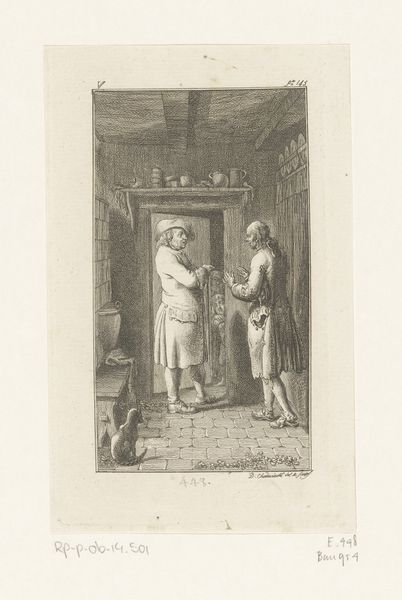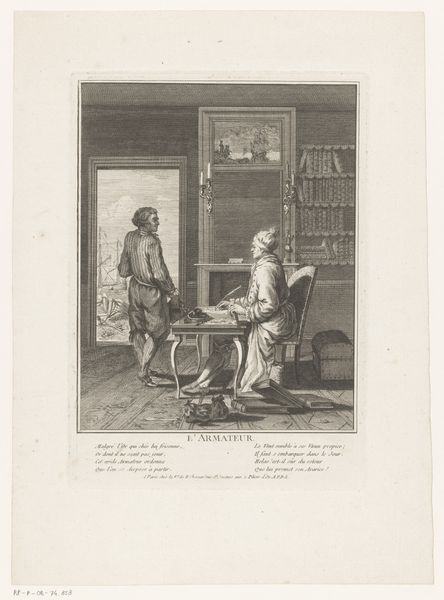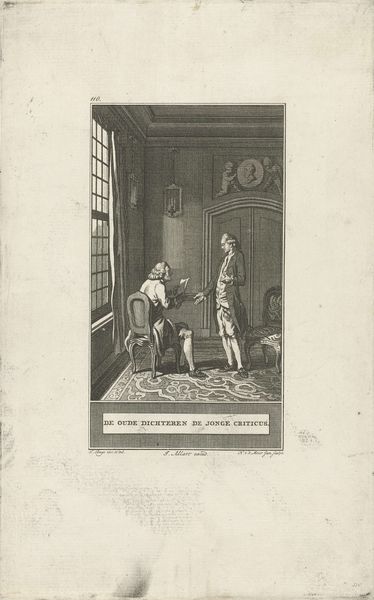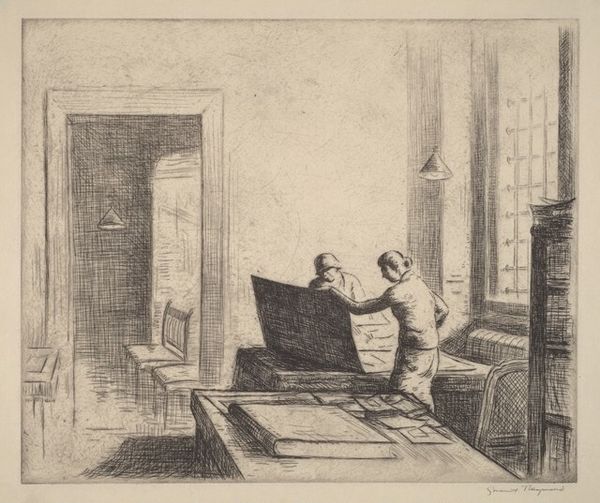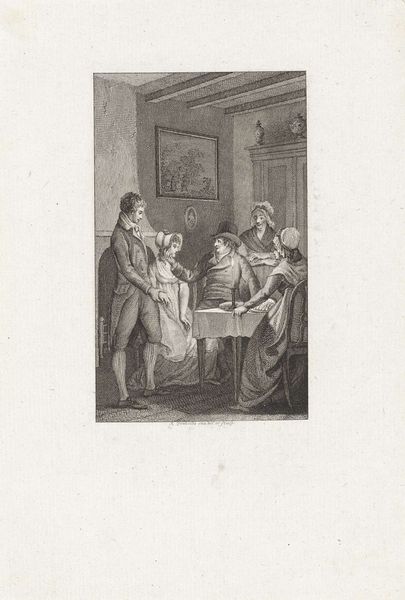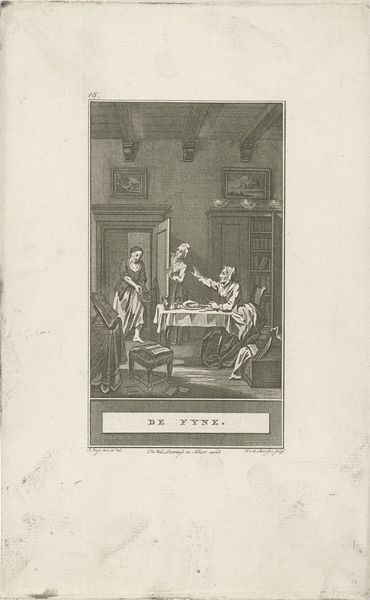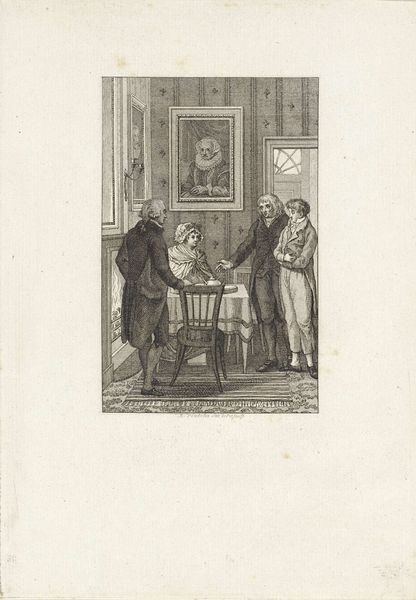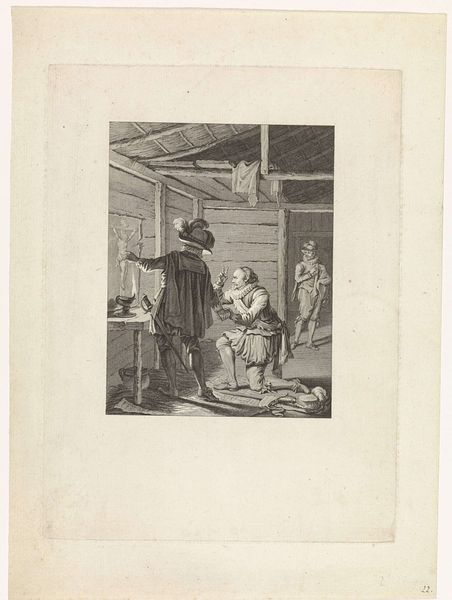
engraving
#
portrait
#
neoclacissism
#
old engraving style
#
genre-painting
#
engraving
Dimensions: height 240 mm, width 150 mm
Copyright: Rijks Museum: Open Domain
Editor: Here we have "Three Gentlemen by a Safe" by Joannes Pieter Visser Bender, created sometime between 1795 and 1813. It’s an engraving, and what strikes me is how secretive the scene feels. The safe dominates the composition. What’s your take on this, Professor? Curator: Secretive indeed! And deliciously so. The beauty of Neoclassicism, even in a genre scene like this, lies in its restraint, wouldn’t you agree? There's almost a theatrical staging to the image, like a scene from a play, maybe a satire about banking. Look at how the light catches the figures and the safe; everything is rendered with such detail. Does the gentleman to the left strike you as the owner or someone with more nefarious intent? Editor: He definitely looks contemplative, perhaps suspicious? I guess it’s ambiguous enough that he could be either. So, you're saying that despite it appearing like a snapshot of everyday life, it still manages to comment on the broader societal context of the time? Curator: Absolutely! Consider the historical context. The late 18th and early 19th centuries were turbulent times. Banking was this new, somewhat mysterious world. Also note that Bender gives us the key, framing this little drama within the severe lines of Neoclassical composition. It gives us structure for speculation. What do you think? A solid safe, but a slippery slope. Editor: That makes me see it differently. I was so focused on the figures, I hadn’t considered how much the artistic style itself adds to the narrative! Curator: Precisely! Isn't it fascinating how art can whisper stories that history books sometimes shout? Editor: It truly is. Thanks so much for sharing your insights!
Comments
No comments
Be the first to comment and join the conversation on the ultimate creative platform.
